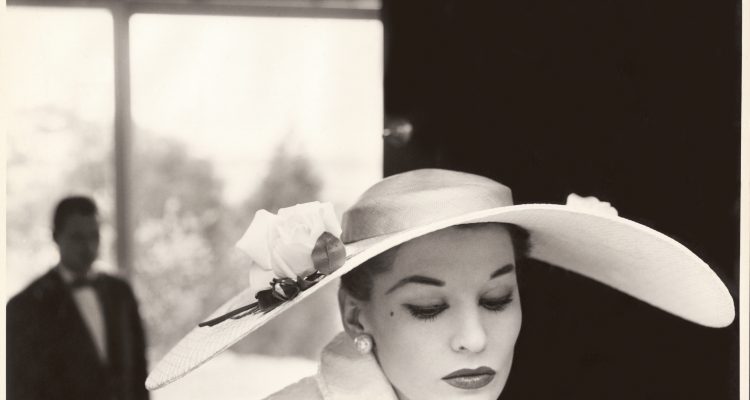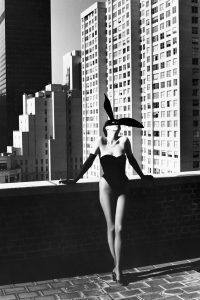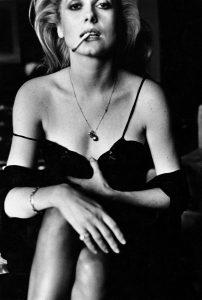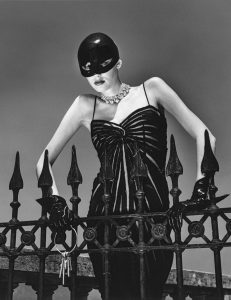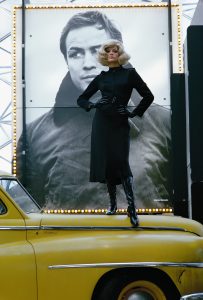Until June the 25th, 250 shots of the genius of photography Helmut Newton in a major retrospective in Palazzo Reale, Milan
The big retrospective HELMUT NEWTON. LEGACY, conceived on the occasion of the hundredth anniversary of the photographer’s birth (Berlin, 1920 – Los Angeles, 2004) and postponed due to the pandemic, aims to take a fresh look at the uniqueness, style and provocative side of the artist’s work. Curated by Matthias Harder, director of the Helmut Newton Foundation in Berlin, and by Denis Curti, the exhibit, that tkakes place in Palazzo reale till June, the 25th, traces the entire career of one of the most loved and discussed photographers of all time through 250 photographs, magazines, documents and videos. It proposes, alongside the most iconic images, a corpus of unpublished photographs, presented for the first time in Italy, which will reveal many lesser-known aspects of Newton’s work, with a specific focus on the most unconventional fashion shots. Polaroids and contact sheets will also provide information on the creative process of some of the iconic motifs on display, while special publications, archival materials and statements by the photographer will help the visitor understand the context in which the inspiration of this extraordinary artist was born. In a journey divided into chronological chapters, visitors will be able to go through all the phases and evolutions of Newton’s life and career, from the beginning to the last years of production. Helmut Neustädter was born in Berlin in 1920 into a wealthy family of Jewish origin and soon expressed his interest in photography. He began his training at the age of 16 alongside the famous fashion photographer Yva, but soon left the city to escape persecution by the Jews. After a few trips in which he worked as a photojournalist, he opened a small studio in Melbourne, supported by his future wife, the actress June Brunell. In 1956, working under the anglicized name of Helmut Newton, he began collaborating with Vogue Australia, Vogue England and with Henry Talbot, in their joint studio in Melbourne The photographer arrives at his inimitable style in Paris in the Sixties: his dynamic vision is manifested, for example, in a series of photographs of the productions of the designer André Courrèges that Newton took for the British magazine Queen in 1964, or in his works for Vogue France and Elle France. In the Sixties he carried out intense collaborations with Yves Saint Laurent and Karl Lagerfeld. Newton captured the spirit of the time, marked by the sexual revolution of the end of the decade, without limiting himself to the representation of clothing as an accessory, with a photography metaphysical. In the mid-1960s Newton bought a house near Saint-Tropez on the French Riviera, a place that would become the backdrop for countless shots. Interest in the theme of the impersonator makes its way, which he begins to develop through duplication of images and combinations of mannequins and live models. The various commissions from international magazines lead him to travel to Venice, London, Milan, Rome, Montreal, and Tunis. In the Seventies, leaving the canons of classic fashion photography, he created increasingly provocative images, distorting sets and using models and stylists in an unconventional way. Newton further expands the creative possibilities of his photographic services: by helicopter, on a beach in Hawaii, in Parisian hotels. With his work, he tests social and moral limits, coming to redefine them. His models appear elegant and erotic, anarchic and playful. These images capture and deceive the eye, only upon closer examination can we distinguish what is real from what is a reconstruction or re-enactment of his ideas and observations. His inspiration for these shots comes from the most disparate sources: surrealism, the fantasy tales of E.T.A. Hoffmann, the transformations seen in Fritz Lang’s film Metropolis. In 1981, he published the innovative series “Naked and Dressed”, which appeared in the Italian and French editions of Vogue and later in his books. The new visual concept of the diptychs consists in having the naked and clothed models pose next to each other, narrating the cultural spirit of the time – such as the changes in the role of women in Western society. Parallel to these images he produces the first so-called “Big Nudes”, both for print and as life-size prints. From 1987 on, Newton created his own large-format magazine, “Helmut Newton’s Illustrated”, consisting of four issues published at irregular intervals. In the 1990s, Newton used an even more innovative and avant-garde approach, working both for fashion editorials and for large commissions and advertising campaigns for designers such as Chanel, Thierry Mugler, YSL, Wolford, and clients such as Swarovski and Lavazza. In this period, fashion photographs began to establish themselves on the art market with “stellar” prices. This transition is being supported by the growing recognition of the cultural significance of the fashion photography genre. Newton receives awards in France, Munich and Germany in recognition of his total dedication to photography The latest selection of images once again sees the main photographic genres explored in his career intertwine in Newton’s unique way: fashion, the nude and the portrait. It is a final powerful testament to the unique character and extraordinary vision of this outstanding photographer. Until the end of his life Helmut Newton continued to enchant and provoke with his unique vision of fashion and femininity. His transversal work over six decades has defied all attempts at categorization. No other photographer has ever been more published than Helmut Newton, and some of his most iconic images have become part of our collective visual memory

